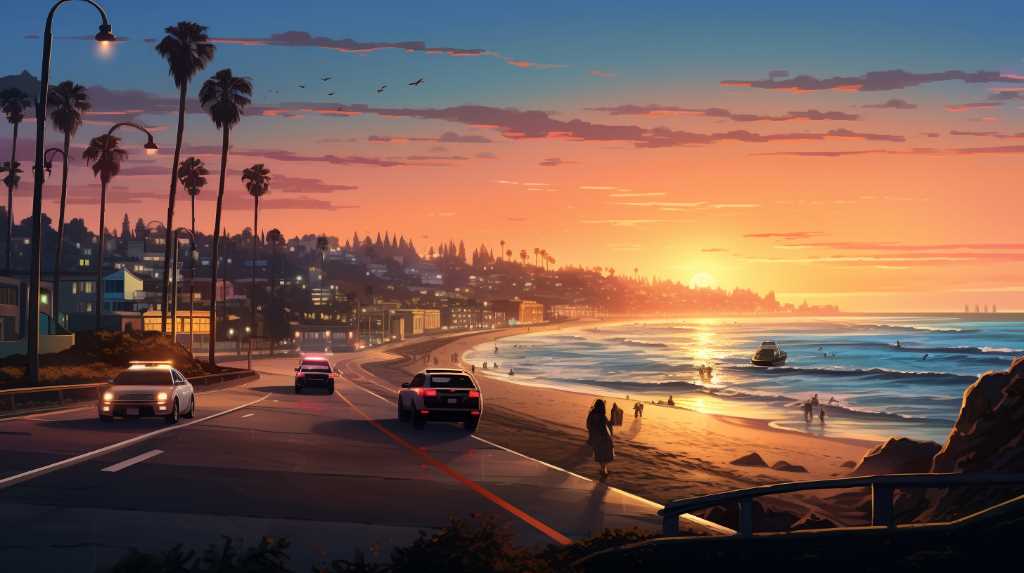
Knowing how to follow traffic laws is key to keeping everyone safe on the roads, especially in busy places like Oceanside, California. This beach town has a mix of local, business, and visitor traffic, so it’s important to have clear rules.
Let’s talk about what you need to know when driving in Oceanside.
First, you should stick to the speed limits, which help protect everyone using the roads.
At crossroads and places where people walk across the street, there are rules about who should go first to prevent crashes.
The police are also really strict about not driving after drinking to keep impaired drivers off the road.
There are parking rules that help keep public areas organized.
It’s also good to know the rules for bike riders and walkers to make sure everyone knows their rights and what they should do.
If you live in or visit Oceanside, understanding these rules will help you drive safely and legally.
Navigating Speed Limits
In Oceanside, California, speed limits change depending on the type of road and the area to keep everyone safe and to follow the law.
In places where people live, the speed limit is usually 25 mph to protect people walking and keep the area peaceful.
Near schools, the speed limit can be between 15 and 25 mph, based on the signs, and it’s especially important to drive slowly when kids are arriving or leaving school.
On big roads and in areas with lots of shops and businesses, you can drive between 35 and 55 mph. This helps cars move well but still keeps it safe.
The rules for speed limits come from the California Vehicle Code, but local rules and traffic studies can adjust them.
Drivers must watch for and follow these speed limits because police check to make sure everyone is driving safely and to prevent accidents.
Right-of-Way Rules
After talking about speed limits, let’s look at who has the right-of-way in places like intersections, crosswalks, and junctions in Oceanside, California.
It’s really important for drivers to let people walking go first at all crosswalks, whether they’re marked with lines or not, because California law is very clear about protecting pedestrians.
At intersections with stop signs or blinking red lights, the rule is simple: the first car to stop gets to go first. If two cars stop at the same time, the car on the right goes first.
On bigger roads with several lanes, if there’s a roundabout, you must let cars that are already in the circle go before you enter.
Also, if you see an emergency vehicle like an ambulance or fire truck with flashing lights and sirens, you need to yield by moving over to let them pass quickly.
Following these rules helps everyone stay safe and keeps traffic moving well.
DUI Enforcement Policies
In Oceanside, California, the police take drunk driving very seriously. They set up many checkpoints and patrol often to prevent it. The police there regularly schedule and sometimes set up surprise sobriety checkpoints to catch drivers who might be drunk or on drugs. These checkpoints are set up fairly and carefully, following state and federal rules to keep roads safe without bothering people too much.
The police are also good at spotting drivers who might be drunk when they pull them over for other reasons. If a driver seems drunk, the police will test them right there. In Oceanside, if you’re 21 or older, you can’t drive with a blood alcohol level over 0.08%. The rules are even stricter for truck drivers and anyone under 21. They’re really strict about these rules, which shows they want to keep drunk drivers off the road and everyone safer.
Parking Regulations Overview
In Oceanside, California, there are detailed parking rules to keep people safe and traffic moving smoothly. These rules help everyone—people who live there, businesses, and tourists—by making the best use of limited parking space. If everyone follows the rules, emergency vehicles can get through, and there’s less traffic jamming up the streets.
Drivers need to watch for signs that tell them where they can’t park, like zones with a time limit or places you need a permit to park. If you park where you shouldn’t, you might get a fine or even have your car towed away. It’s important for drivers to know these rules to avoid trouble and help keep traffic in order.
Bicycle and Pedestrian Laws
In Oceanside, California, the rules for bike riders and walkers help keep everyone safe and traffic running smoothly.
Bike riders have to follow the same rules as cars, meaning they have to stop at red lights and stop signs. They need to ride in the same direction as cars and use bike lanes when they’re there. If you’re under 18 and riding a bike, you have to wear a helmet.
Walkers should cross streets at crosswalks and wait for the walk signal. If there’s a sidewalk, use it instead of walking in the street.
Both bike riders and walkers need to be extra careful at places where roads cross each other to avoid accidents.
It’s really important for everyone to follow these rules so that all kinds of travelers can get around Oceanside safely and easily.
Conclusion
To sum up, following the traffic rules in Oceanside, California, like speed limits, giving way to others, strict drunk driving laws, parking rules, and guidelines for bike riders and walkers, is crucial.
When everyone knows and follows these rules, it makes the roads safer and helps everyone get along better.
This reduces accidents and makes Oceanside a more organized and secure place to live and visit.